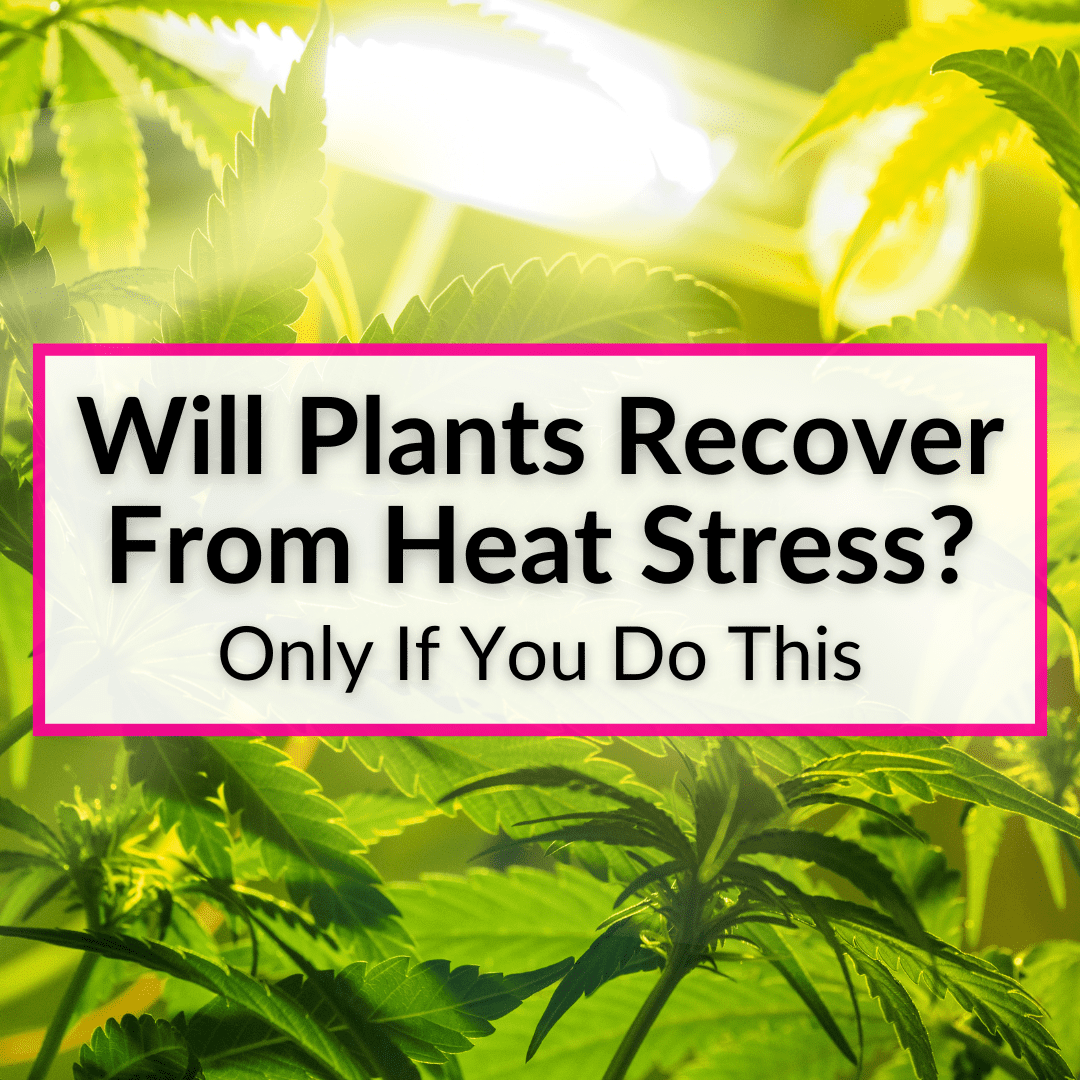 Too much heat is the enemy of plants.
Too much heat is the enemy of plants.
The enemy of all living things, really.
If your weed plants are exposed to excess heat, they will suffer heat stress.
And heat stress can kill your plants and ruin an entire grow.
But if you act quickly, you can fix it.
Will plants recover from heat stress if you know how to help them do so?
In many cases yes. But not always. We will tell you when plants can recover from heat stress and what you need to do. We will also help you avoid this issue again in the future.
Contents
Will Plants Recover From Heat Stress?
Yes, you plants can recover from heat stress. But they can only do so if you first remove the source of the heat that caused the stress. And if it is not too late in the grow cycle. The later it is, the less likely they can recover.
Before anything, you first need to get the temperature down and make sure you provide your plants the ideal growing conditions. Only then can they begin to recover from heat stress. Here is how you do that.
How To Help Indoor Cannabis Plants Recover From Heat Stress
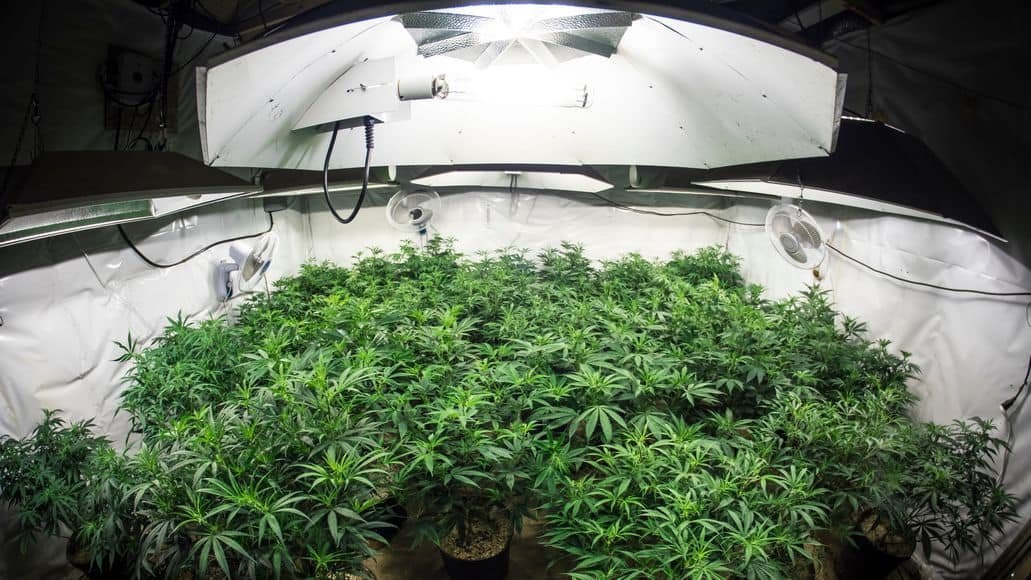
With indoor plants, you control the environment completely. This means it is easy to remove the source of heat stress. Figure out what is causing the issue and fix it.
Adjust Grow Lights
Hanging grow lights too close to your plants will cause heat stress. If you are unsure how far away to install grow lights, use the hand test.
Place the palm of your hand on the canopy leaves of your cannabis plants. If the back of your hand becomes unbearably hot within 30 seconds, the lamps are too close.
If you are using HID lighting, changing to LED grow lights (these are best) will also help with heat stress, because LED lights burn less hot. But they still produce some heat. All grow lights produce heat.
If your indoor cannabis plants are suffering from heat stress and you think that it is related to your lighting, you may also want to adjust the light schedule.
Put the lights on at sundown and turn them off at sunrise. This will prevent your plants from dealing with the daytime heat in addition to the heat from your grow lights at the same time.
Improve Air Ventilation
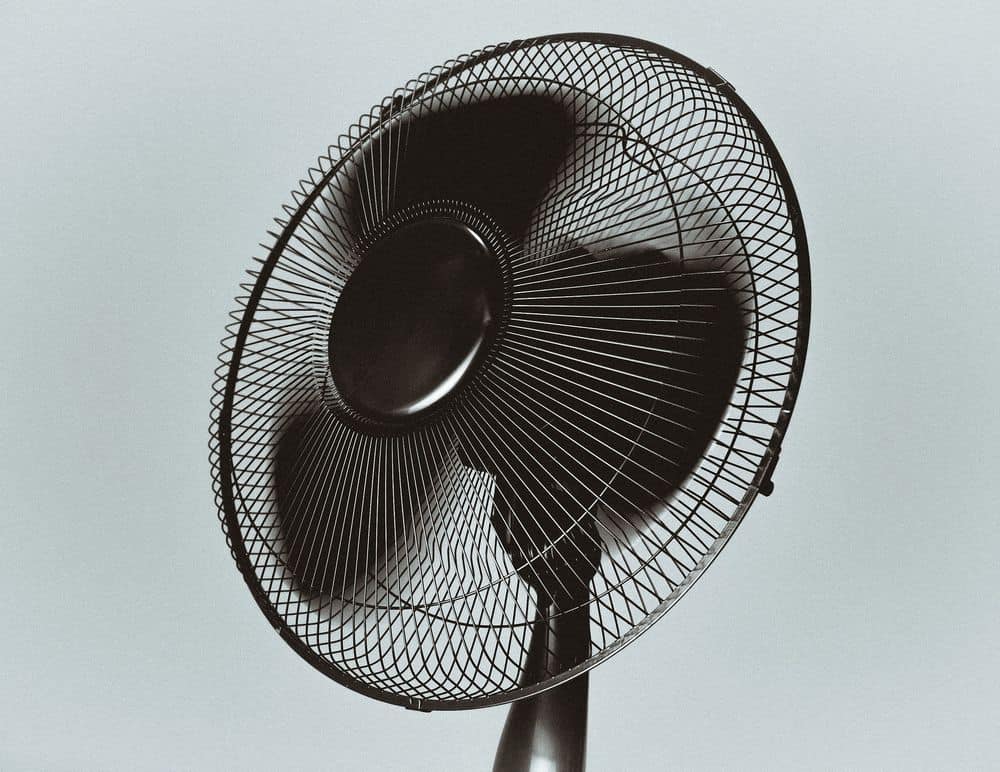
Cannabis plants need to have proper ventilation with fresh airflow. You should exchange the air in the grow room every 5-10 minutes. Extract the hot air with a fan. If the extraction fan is not large enough or is not running efficiently, the air in your indoor grow space will become stagnant.
Not only will this make the room too hot, but it will also keep the air too dry or too moist. Lack of humidity can also negatively affect plants suffering from heat stress.
Temperature Control
Cannabis grows within the ideal temperature range of 60° to 80° Fahrenheit. If your ventilation system cannot maintain the proper temperature, add air conditioning or otherwise cool your grow tent.
Do not severely drop the temperature right away when your plants are suffering from heat stress. Gradually introduce cold air. Rapidly changing the temperature will shock the plants.
How To Help Outdoor Plants Recover From Heat Stress

Outdoors, your job is a little more difficult, depending on the reason for the heat stress. There is not much you can do about the weather, after all. But you can help your plants stay cool on hot days.
Use Pots Or Grow Bags
If you live in an extremely hot climate, heat stress will be a challenge. Planting your cannabis plants in pots or bags allows you to move them much more easily.
You cannot transplant cannabis (adult plants; you can transplant seedlings), so you want to make sure you can move heat-stressed plants out of the sun, if necessary. Do not put pots on surfaces that absorb heat like tile or brick.
Do not use planters that are black or made from a material that absorbs heat. Choose plants that are bigger than what the plant will need, so there is extra room for moisture.
Plants with mild heat stress will recover with moderate amounts of shade. If plants are suffering from severe heat stress, move them completely out of the sun for 2 to 3 days.
If your potted cannabis plants are still struggling to recover from heat stress, try wrapping the pot in white paper. White reflects heat and light.
Shade Your Plants
If your plants are not in pots or bags, you won’t be able to move them. But all is not lost. You can still protect them from the heat of the sun by covering them.
There are a number of ways to do this, but you basically need to put some kind of tarp above the plants. Ideally, you want something white or light colored, so that it reflects the light and heat of the sun.
Water In The Morning
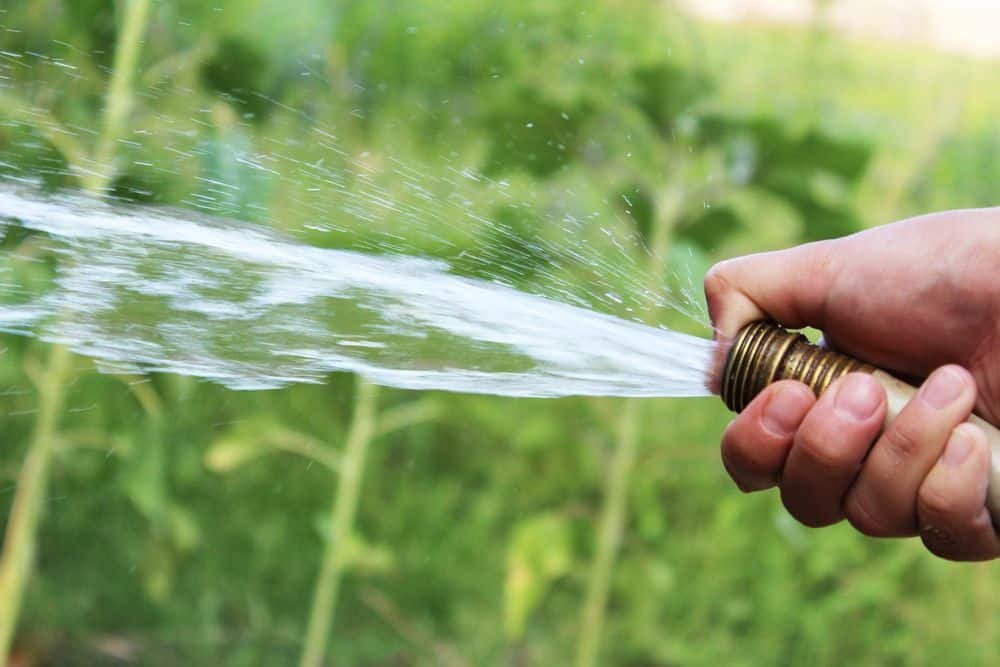
Water outdoor plants first thing in the morning. This will give them a strong start on the day. Watering in the morning will make sure the plant has enough to get through the day.
If you live in a scorching climate, consider watering in the afternoon as well. But be careful not to overwater. Do not spray water on leaves that are in direct sunlight. This will cause sunburn and worsen heat stress.
Add Nutrients
Healthy plants have the best chance of recovering from heat stress. Make sure the pH levels of the water and soil fall between 6.0 and 7.0. Cannabis thrives off of nitrogen, phosphorus, and potassium. Make sure your plants are receiving adequate amounts of each nutrient.
You can add seaweed and kelp to the base of the plant for an added boost, if it is recovering from heat stress. Seaweed and kelp are saturated with nutrients that will give cannabis plants extra strength.
Choose Proper Strains
Specific strains of cannabis work better in heat. If you are growing outside in extremely hot or humid climates, choose heat-resistant strains. The best strains for hot climates include:
- Blue Dream
- OG Kush
- White Widow
You can find these strains in any good online seed bank. This article lists the best seed banks currently.
How To Identify Heat Stress
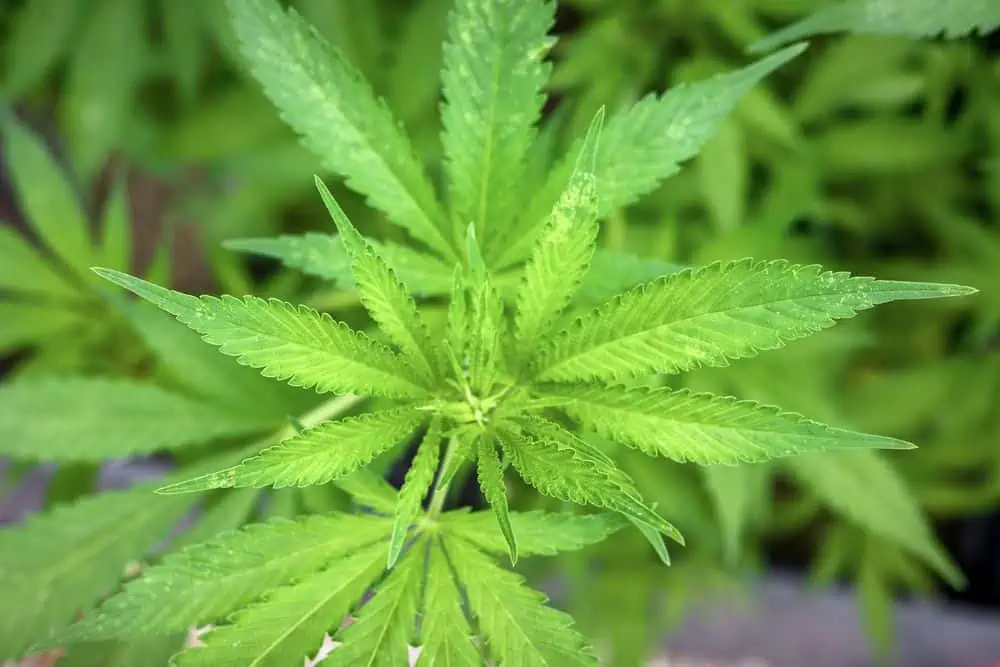
Heat is a major cause of stress in marijuana plants. How you identify heat stress differs, depending on the growth stage of the plant. Here is what to look for in each growth stage.
Seedling
Cannabis seedlings are weak. They do not have the strength or nutrient profile to fight severe cases of heat stress. It is important to identify heat stress early in seedlings.
Your seedling may be suffering from heat stress if it is growing slowly or if its growth appears stunted. New leaves will be pale or withered.
Vegetative Stage
Heat stress is the easiest to overcome in the vegetative stage. If a cannabis plant is suffering from heat stress during the vegetative stage, you will notice the leaves curling. Brown spots will appear on leaves and eventually, the browning will travel down to the stem.
Flowering Stage
If heat stress occurs during the flowering stage, it can be irreversible. Cannabis plants under heat stress in the flowering stage will have bleached canopy leaves that are curled. Healthy leaves lay flat.
In addition, long, airy buds may begin to grow from the tips of other buds. Finally, plants suffering from heat stress will have white pistils instead of orange hairs at harvest time.
What Causes Heat Stress In Plants
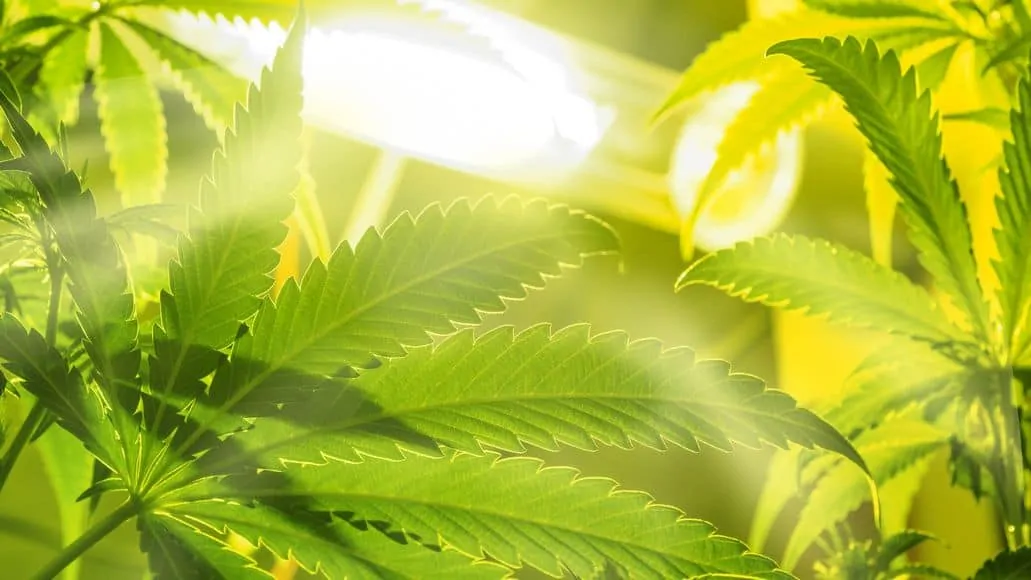
The best way to deal with heat stress is not to have to deal with it at all. If you know what can cause heat stress in marijuana plants, you can take steps to prevent this common weed growing issue from occurring in the first place.
- Low humidity: Plants increase transpiration when under stress. The transpiration process requires moisture to be in the air and in the plant’s roots. Areas with low humidity will not have enough moisture to allow for transpiration.
- Nutrient deficiencies: Healthy plants can combat many issues on their own. However, plants that are not getting adequate amounts of food will be weak and more susceptible to heat stress.
- High-intensity light: This is especially an issue when you grow cannabis indoors under grow lights. Panging grow lights too close to plants causes heat stress.
- Poor ventilation: You need to remove hot air from your grow room and pump in fresh air.
- Equipment failure: Indoor rooms rely on a lot of equipment to keep cannabis healthy. If extraction fans, dehumidifiers, or air conditioners fail, the growing environment will become unhealthy. Frequent maintenance and inspection of equipment are key to preventing heat stress in indoor growing spaces.
Plants Can Recover From Heat Stress: Final Thoughts
Heat stress is never good, but if it happens earlier in the grow cycle, and you notice it early enough, you can help your plants recover from it. The key is to immediately remove the source of heat and to ensure you provide your plants with everything they need t grow strong and healthy.
Obviously, this is easier to do when growing indoors, since you ca simply reduce the power of your grow lights by dimming them, hanging them higher up, or even removing some of them.
Outdoors, there is nothing you can do about the sun. But you can move your plants out of the sun, as long as you are growing them in pots. Alternatively, you can shade them from the sun, bu putting a cover over them.
Leave a Reply